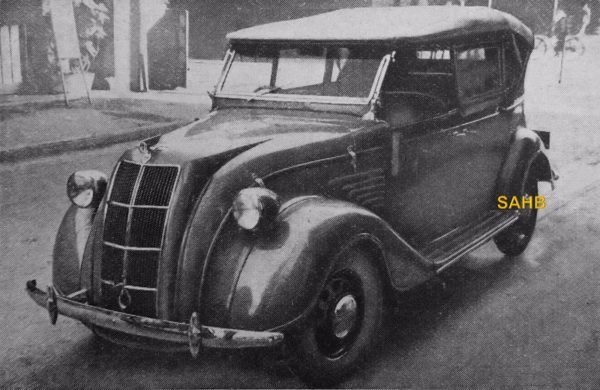
According to The Autocar for 6 November 1936 this was the first car produced by the Toyoda company. Later research implies that their very first car was the AA saloon and that this tourer was the AB – but both were launched in 1936.
In May 1936 the Japanese Diet passed the Automobile Industry Control Law. This gave companies that previously concentrated on building trucks an incentive to produce cars, by giving exemption from taxes and duty-free importation of materials.
Kiichiro Toyoda (1894-1952) was a Japanese businessman and the son of Toyoda Loom Works founder Sakichi Toyoda. His decision to change Toyoda’s focus from automatic loom manufacture into automobile manufacturing created what would become Toyota Motor Corporation.
In May 1935, after a troubled period of development exacerbated by lack of Japanese experience in car manufacture, the first A1 passenger car prototype was completed. The A1 and its production successors the AA saloon and AB tourer were powered by a 3,389 cc Type A overhead valve 6-cylinder engine producing 62 horsepower. It was copied and reverse-engineered from a 1933 Chevrolet Master, and the chassis and electrics were copied from Ford. There were solid axles at both ends. The body design was heavily influenced by the DeSoto Airflow; Toyoda had bought one and disassembled it during 1934.
Only 1,404 AA saloons were produced from 1936 to 1943, when the model was replaced by the less luxurious AC. Only 353 AB convertibles were produced from 1936 to 1942, with no direct replacement.
But why, and when, the change from Toyoda to Toyota? In 1936, the company ran a public competition to design a new logo. As part of this, a suggestion came forward to change the name. Firstly, because “Toyota” represents a voiceless consonant sound in Japanese, which is considered “clearer” than voiced consonants like in “Toyoda.” Secondly, because the number of strokes to write Japanese characters, called jikaku, is also important. A name with eight strokes is believed to be connected to wealth and good fortune, and “Toyota” (トヨタ) contains exactly eight strokes. Finally, the change also signified the expansion of a small independent company to a larger corporate enterprise.
Photo courtesy of The Richard Roberts Archive: www.richardrobertsarchive.org.uk







Leave a Comment